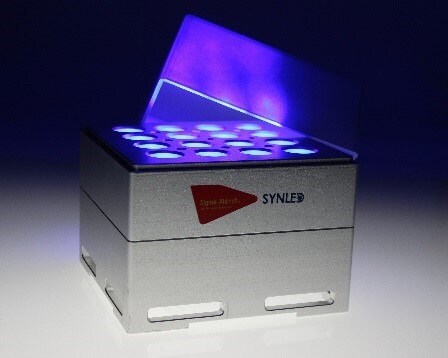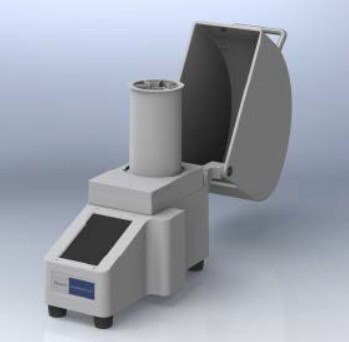Scale-Up Guide: Photocatalysis Reaction
Important Note
To best enable scale-up success, the use of glove box is highly recommended. However, modified bench top techniques are provided below.
General Guidelines for Reaction Scale-Up
- Oven dry all glassware and stir bars
- Preheat oil bath to avoid temperature spiking
- Use dry, high purity reagents (and substrates)
- Use unopened Sure/Seal™ anhydrous solvents (or newly degassed)
- Keep reactions under an atmosphere of nitrogen
- Purge needle/syringe with nitrogen prior to use
Photoreactors
The SynLed Parallel Photoreactor (Z742680) and the Penn PhD Photoreactor m2 (Z744035) are both available for photocatalysis reaction scale-up. The SynLED Parallel Photoreactor features a 4x4 reaction block bottom-lit with blue LEDs (465 nm) facilitating reaction optimization and library synthesis (approx. volume: 2-4 mL). For further scale-up (up to 40 mL vials), the Penn PhD Photoreactor m2 provides user control of wavelength, temperature and light intensity.

SynLed Parallel Photoreactor (Z742680)

Penn PhD Photoreactor m2 (Z744031)
Example Experimental
All solids (substrates, catalysts, reagents) were weighed on a bench top balance and added to a cooled, oven dried flask1,2 equipped with an oven dried stir bar. The reaction was capped and then purged and backfilled with nitrogen (3x) with a nitrogen-fed manifold needle. Anhydrous solvent (SureSeal™ed and punctured with a nitrogen-fed manifold needle) was then added via syringe. When all constituents were added, the nitrogen line was removed and the reaction allowed to stir under appropriate light irradiation for the duration of the reaction.
1See the Photoredox Catalysis: Desk Reference and User Guide for more detailed additional guidance and troubleshooting tips
2Reaction vials capable of being sealed with a microwave cap are very useful as well. By design, the caps do not need to be replaced once punctured.

To continue reading please sign in or create an account.
Don't Have An Account?